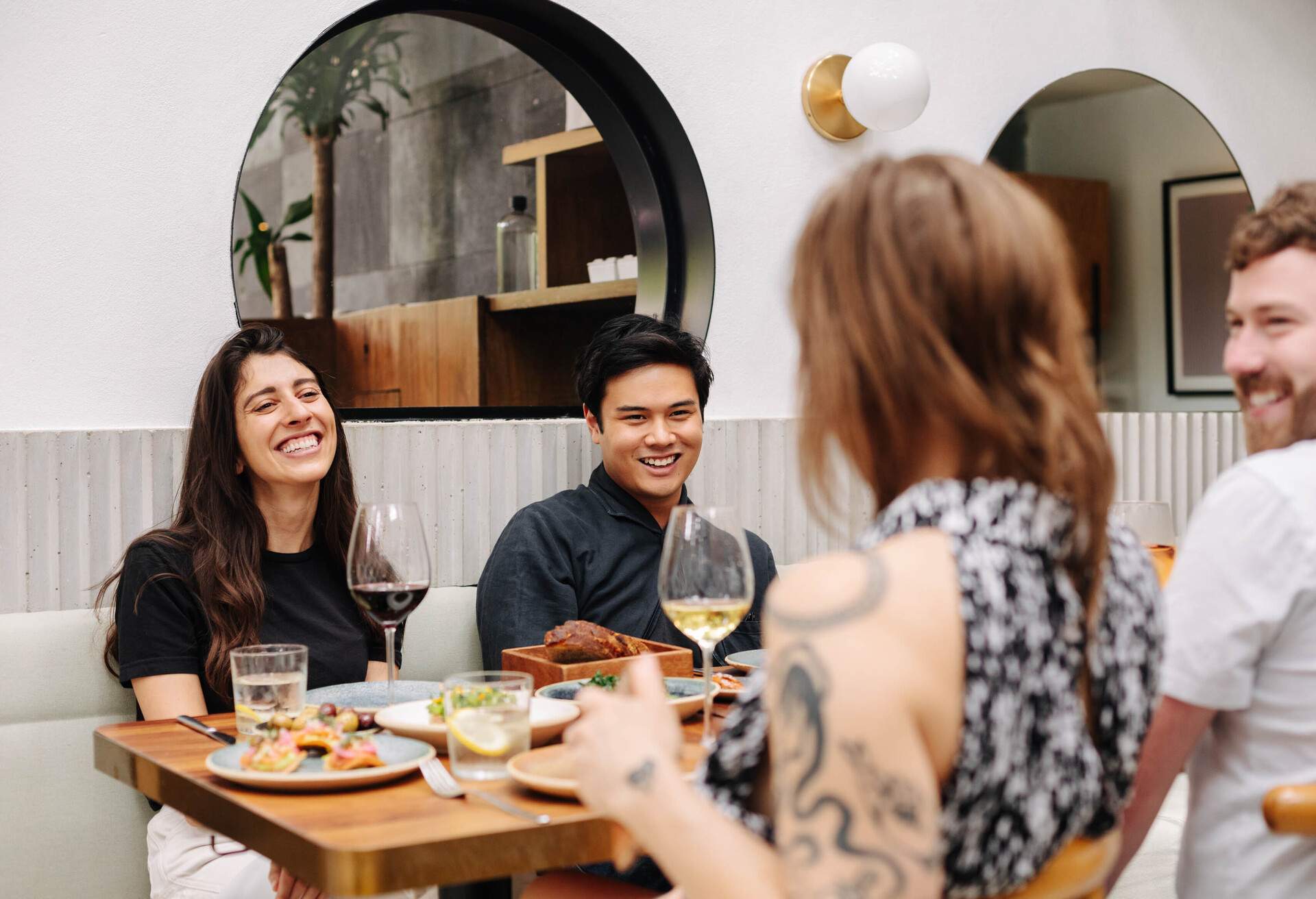The world of online reviews is a place where your restaurant’s reputation can soar or stumble, all thanks to the power of the internet. People aren’t shy about leaving their opinion, whether it’s a Google review, social media post or on TripAdvisor or OpenTable.
You want to make sure that your restaurant looks its best online, with plenty of glowing reviews, but you also want to keep on top of any negative feedback. To do that, you need to know where people are leaving reviews and be responsive.
That’s the purpose of this guide, which has all you need to know about finding and managing your restaurant’s online review.
Quick Links
Why are reviews so important?
Where to find online reviews
Responding to comments and reviews
Where to respond
How to respond
Why are online reviews so important?
Picture this: A potential diner is searching for the perfect spot to celebrate a special occasion. They’re hungry for more than just a great meal – they’re craving an unforgettable dining experience. So, where do they turn? Online reviews, of course. With 90% of guests researching restaurants online before dining out, having a good reputation online is a great way to attract business.
But here’s the catch, as it’s not just about the glowing five-star ratings (although those are certainly helpful). It’s about the full spectrum of feedback, from the rave reviews to the constructive critiques. Each review offers a valuable opportunity to gather intel, engage with your guests and continuously elevate your restaurant’s experience.
>Where can I find my online reviews?
You likely already know that major sites like OpenTable, Google Reviews and TripAdvisor host reviews of your restaurant. But there are a few easy ways to consolidate what’s being said about your business across the internet:
OpenTable
Along with reviews on the platform, OpenTable offers reputation management tools. You can see your reviews from top sites like Google, Facebook and TripAdvisor in one dashboard. It also shows lesser-known sites and search engines mentioning your restaurant, helping you monitor everywhere diners are reviewing you.
Google Reviews
Check what diners review on the first page of Google search results for your restaurant. You can also set up Google alerts to get notified of any new online reviews or mentions.
TripAdvisor
Diners flock to TripAdvisor to provide reviews, which can impact your search ranking and reputation. Regularly check your restaurant’s TripAdvisor profile.
Social media
Search for restaurant review hashtags (e.g. #BistroUnion) on platforms like Instagram, Twitter/X, and Facebook, as diners may be reviewing you without tagging your social profiles directly. You can also look up your restaurant in these sites’ search bars and sort reviews by the most recent.
Once you find where your guests are talking, monitor these channels and respond to messages. This is also a great way to choose which social platforms are best for your restaurant if you don’t have the time or resources to dedicate to all of them. The beauty of these “informal” social reviews is that they invite conversation. Responding is a fast way to reach the diner directly to address concerns or show thanks for a great review.
Which reviews and comments should I respond to?
With countless reviews across the internet, deciding which to respond to can be overwhelming. Focus on replies that will maximise guest satisfaction and maintain your online reputation.
Prioritise:
- Negative reviews: Addressing concerns directly reassures guests you take feedback seriously. Offer to make amends rather than get defensive.
- Extreme positive or negative reviews: Overly enthusiastic praise or harsh criticism often warrant acknowledgement. Moderated responses seem more authentic.
- Influential sites: Views on major platforms like Google, Facebook and TripAdvisor reach huge audiences. Being present there shows you’re on top of your reputation.
- Recent reviews: Replying promptly, regardless of star rating, tells guests you’re invested in their timely experience. It also prevents small issues from escalating.
- Trends in feedback: If you notice repeated complaints about slow service, outdated decor or inconsistency in food, address these patterns publicly through an empathetic statement, private operational changes or both.
While replying to every single review may not be feasible or advisable, dedicating just 30 minutes a day to check notifications and respond thoughtfully to priority reviews is priceless to your restaurant’s reputation. The personal connection fuels positive word-of-mouth, returning guests and brand loyalty.
>Where should I respond?
With diners leaving feedback across various sites, knowing where to respond can easily get confusing. Here are some tips on the best response platforms:
Same channel
Prioritise responding on the same platform the review was left on. Replying directly to where the guest raised their concern makes them feel heard and sends the message that you value open communication. This goes for major third-party sites like TripAdvisor and Google, as well as social media sites like Instagram and Facebook.
Your website
Having a visible online management response statement on your restaurant’s website invites discussion too. It shows you welcome authentic experiences – both positive and constructive.
If a guest leaves a detailed negative review, an email may be appropriate to resolve privately, then summarise the outcome publicly to reassure potential diners.
OpenTable
OpenTable’s reputation management allows you to respond directly to guest comments. You can also use it to send customizable surveys to get more actionable feedback about what’s working and what needs improvement from recent diners. This proactive data supplements reviews.
No matter where you choose to engage, be consistent. Repeated visibility and openness to talk will build diner confidence in your brand and intentions.
>How do I respond to restaurant reviews?
Whether the review is good or bad, the best type of response is a fast one. The response should also fit the review. For instance, a paragraph-long rant deserves a different response to a Facebook post or Instagram comment.
And remember that crafting just the right response takes empathy and skill. Follow these guidelines for great and bad reviews:
Positive reviews
Thank the guest personally for taking the time to leave feedback and praise specific aspects.
Example: “Sarah, thank you so much for your phenomenal 5-star review! We strive to create a warm, relaxed atmosphere at our restaurant, so we’re delighted you enjoyed spending your anniversary evening with us. Please come back to celebrate future special occasions!”
Comment on what originally attracted them or a standout meal. Asking thoughtful questions continues the conversation and makes them feel involved. Reassure new guests by noting consistent praise for things like dishes and service highlighted in the review.
Negative reviews
Lead with appreciation for honest feedback, then apologise for any disappointing elements.
Example: “John, thank you for your review. We’re very sorry to hear your server did not adequately describe the fish special preparation. Providing an exceptional dining experience is extremely important to us. Please call or email me directly so we can make this right.”
Take accountability by avoiding excuses, even if accusations seem exaggerated. Offer to connect offline to resolve issues. Close by emphasising your commitment to improvement and invite them to give your restaurant another chance to better meet expectations.
Following this template for responding to both types of reviews reassures every guest they’re heard, understood, and valued, which is the foundation of building online reputation and loyalty.
Summary: Managing your restaurant reviews
Online reviews are a great two-way channel connecting you to diner needs and experiences. Dedicating just 30 minutes a day to monitor mentions accompanied by prompt, caring responses transforms feedback into relationships and trust. With the right reputation control tools like OpenTable in place, your restaurant is ready to thrive one great review at a time.




